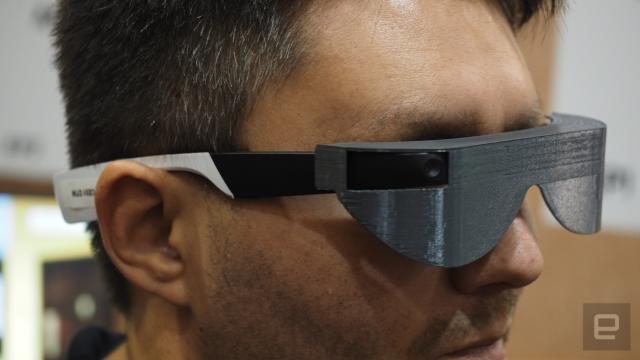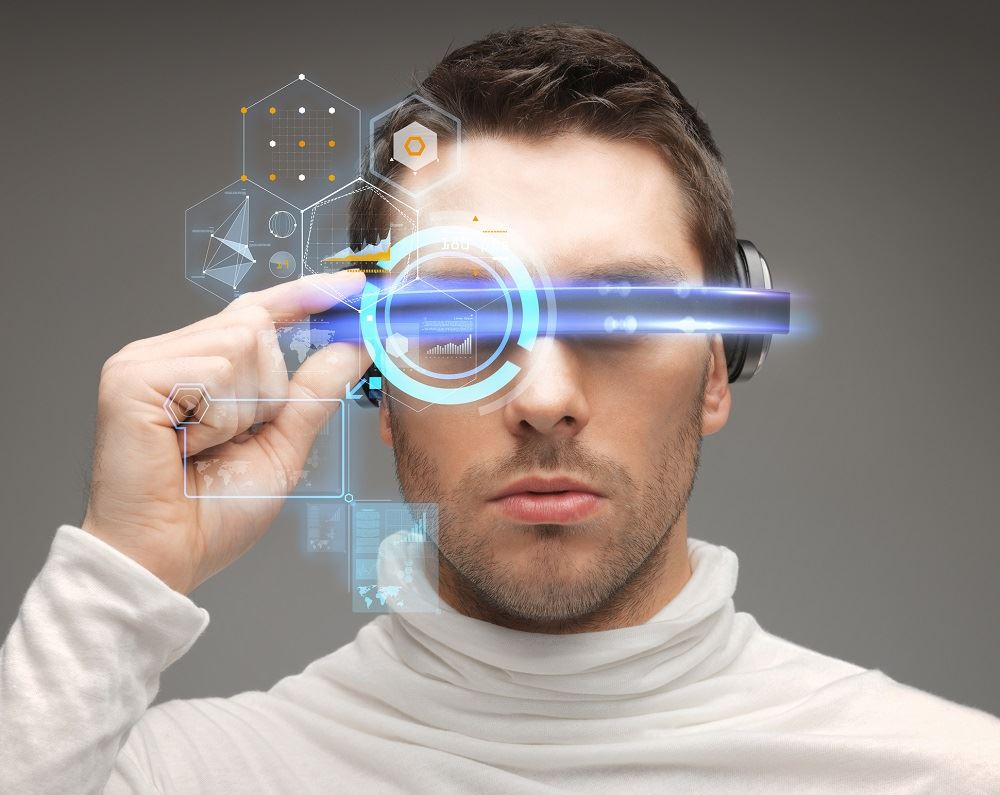How Smart Glasses for the Visually Impaired Are Revolutionizing Daily Life
Empowering Independence With Assistive Technology for the Blind
The combination of assistive modern technology for individuals that are blind or visually damaged stands for a substantial development in promoting freedom and enhancing top quality of life. With a range of devices-- from display viewers to innovative tactile tools-- these modern technologies not just help with navigating and communication however additionally promote social incorporation and participation in different elements of life. As we explore the diverse kinds of assistive tools and their real-world applications, it becomes clear that the effect is extensive. Yet, the evolution of this innovation raises vital inquiries about ease of access and future growths that warrant more exam. Assistive technology for the blind.
Recognizing Assistive Technology
Although assistive technology has actually developed considerably throughout the years, its essential purpose continues to be the very same: to boost the lifestyle for individuals with disabilities, especially those that are visually impaired or blind. This innovation includes a wide array of tools and gadgets that facilitate freedom and performance in daily tasks.
Assistive technology can be categorized into low-tech and modern solutions, each designed to satisfy particular demands. State-of-the-art gadgets typically include software program applications, specialized hardware, and adaptive gadgets that utilize innovative innovation to offer assistance in numerous contexts. Conversely, low-tech remedies may include day-to-day items that are modified to improve ease of access, such as magnifiers or tactile markers.
The assimilation of assistive innovation right into the lives of individuals that are blind or aesthetically impaired not just advertises freedom but likewise fosters social inclusion and engagement in academic and specialist environments. By leveraging these modern technologies, users can navigate their surroundings, gain access to info, and interact properly, thus improving their general lifestyle. Understanding assistive innovation is critical for supporters, professionals, and caregivers who aim to support people in optimizing their prospective and accomplishing better freedom.
Types of Assistive Gadgets
Assistive tools for the visually damaged and blind are crucial tools that enhance daily obeying addressing particular challenges experienced by individuals. These devices can be broadly categorized into 3 major types: optical gadgets, electronic devices, and sensory devices.

Sensory tools, such as Braille screens and responsive maps, supply alternative methods to get details. Braille shows transform digital text into Braille, making it possible for users to review touch. Tactile maps supply spatial understanding with elevated lines and structures, enabling far better ecological awareness.
Together, these assistive tools empower individuals with aesthetic impairments to involve more fully with their environments, promoting higher freedom and confidence in daily tasks.

Influence On Daily Life
The assimilation of assistive technology right into the daily lives of people who are blind or visually damaged significantly boosts their capability to connect and browse with the world around them. Instruments such as screen viewers, Braille presents, and mobile applications help with access to details, enabling customers to engage with electronic content, interact successfully, and handle day-to-day tasks independently.
Moreover, innovations like smart glasses and navigation applications supply real-time help in unknown settings, improving wheelchair and self-confidence. These devices make it possible for users to determine barriers, read indications, and also recognize faces, therefore cultivating a sense of freedom in public rooms. In addition, home automation systems, which can be regulated via voice commands, allow people to handle their living settings more successfully, improving convenience and security.
The influence of assistive technology prolongs past sensible tasks; it advertises social inclusion and emotional wellness. By connecting the space between individuals and their surroundings, these innovations equip customers to take part totally in area activities, pursue educational possibilities, and take Click Here part in significant connections. Inevitably, the innovation of assistive modern technology contributes in redefining the opportunities for people who are visually impaired or blind, causing a much more inclusive and accessible society.
Success Stories and Reviews

Another effective endorsement originates from Mark, a current college graduate who utilized screen reading software program throughout his scholastic trip. This technology enabled him to access course products and take part in conversations, inevitably leading to his successful transition into the workforce. Mark credit histories assistive modern technology for encouraging him to attain his profession objectives, stressing its function in leveling the playing field for individuals with aesthetic impairments.
In addition, recreation center have actually reported boosted engagement in their programs many thanks to the introduction of obtainable digital systems. These systems have made it simpler for individuals to connect, share resources, and assistance each other. These success tales jointly emphasize the extensive impact of assistive innovation in cultivating self-reliance, enhancing high quality of life, and breaking down obstacles for the blind and aesthetically damaged community.
Future Fads in Assistive Technology
Arising modern technologies are poised to reinvent the landscape of assistive tech for people that are visually damaged or blind. Innovations Homepage in expert system (AI) and artificial intelligence are boosting the capabilities of devices, enabling even more instinctive individual experiences. AI-driven applications are progressively able to review and identify objects message aloud in real-time, providing customers with valuable information about their environments.
Furthermore, innovations in wearable technology are developing new possibilities for independence. Smart glasses equipped with augmented fact functions can overlay critical information onto the individual's area of vision, promoting navigating and communication with the atmosphere. The integration of Internet of Things (IoT) devices is improving accessibility in clever homes, enabling individuals to manage appliances and obtain notices via voice commands or responsive interfaces.
The development of braille screens and responsive feedback systems is likewise on the increase, advertising accessibility to electronic web content and boosting communication. As these modern technologies remain to develop, they assure to enhance day-to-day living, educational chances, and employment prospects for individuals with aesthetic impairments. Continual partnership in between engineers, users, and advocacy teams will certainly be necessary in making certain these innovations meet the requirements of the neighborhood properly.
Verdict
Finally, assistive technology plays a crucial duty in improving the self-reliance of people that are aesthetically damaged or blind. By offering important devices and resources, these technologies promote boosted communication, access, and navigating to info, thereby promoting autonomy and self-confidence. The transformative effect of assistive gadgets not just promotes reliable interaction with the setting yet also urges social addition and participation in different elements of life, inevitably equipping customers to flourish within their areas.
The combination of assistive technology for people who are visually impaired or blind vision care clinic represents a substantial development in cultivating independence and improving high quality of life.The integration of assistive innovation right into the lives of individuals who are blind or aesthetically impaired not only advertises autonomy however additionally fosters social addition and involvement in academic and specialist atmospheres. Inevitably, the development of assistive modern technology is critical in redefining the opportunities for people who are aesthetically impaired or blind, leading to a much more available and inclusive society.
Lots of people that are blind or visually impaired have actually shared motivating success tales that highlight the transformative impact of assistive technology on their lives.In final thought, assistive innovation plays a critical duty in boosting the self-reliance of people who are blind or aesthetically impaired.